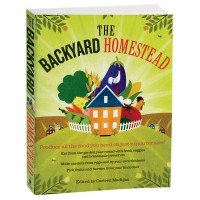

The earth sprouts. You don't need a special device. Just seed and water. Wet ground, warm air, and quality seed provide all you ever need to be a successful gardener. Of course, not everybody has the time to garden and some just don't have the property. Others have the interest, but not the skill. That's why sprouting is often called "apartment gardening" or "kitchen gardening." You don't need a back yard. You don't need to watch the calendar, the planting dates, temperature, harvest times, northern light, southern exposure.

Nope. You can be a kitchen gardener in January or July; In Atlanta or Alaska. You don't need a "green thumb." There is no soil. No muss or fuss. A pound of seeds can produce several pounds of baby greens, depending on the variety. Kitchen gardeners grow many of the same things as the backyard gardener-radish, cabbage, broccoli, kale, sunflower, peas, garlic and onion chives. The backyard gardener harvests his/her crop in 6-12 weeks, but the apartment gardener has a harvest every week. The traditional "bean" sprouts, mung bean, adzuki, soybean, lentil, green pea, chick pea, etc. are ready even sooner-only 4-5 days. Bean sprouts are beans with a "tail" or shoot on them. Asian cultures traditionally use them in stir fries and wok dishes, but they also add crunchy texture and flavor to salads and marinates, and are the main ingredient in many dips and spreads.*
Radish, cabbage, broccoli, kale, etc. all grow green leaves. They are called micro-greens because they can be used as lettuce substitutes in salads. Instead of one seed producing a large "head" of lettuce, the kitchen gardener grows hundreds of baby leaves which combine to create a "home-grown" baby green salad.

Some other flavors, not usually grown in outdoor gardens, but popular with as sprouts are buckwheat, clover, alfalfa, mustard, and fenugreek. Some of these are important cover crops for farmers.
Ask any organic farmer and they will tell you that alfalfa and clover cover part of their acreage every season in order to regenerate the nitrogen (protein) in their soil so they can produce healthy vegetable crops. Buckwheat is one of the most important grains to a farmer. It is not technically a wheat, but actually related to rhubarb. Have allergies? Don't worry, buckwheat contains no "wheat" and no "gluten." Farmers love it to feed their livestock and poultry. Bees love it because it creates a dark, flavorful honey. But it is perhaps most beneficial to kitchen gardeners because of its smooth, succulent taste and texture, similar to Bibb or "Boston" lettuce. Its heart shaped leaf is reminiscent of a "four leaf clover."
Does the kitchen gardener need a special device? That question is like asking a backyard gardener if he or she needs fertilizer. It is not necessary, but it provides some wonderful benefits. Next time, we will explore the types of appliances used by kitchen gardeners and evaluate their benefits.
*For recipe ideas, see "Sproutman's Kitchen Garden Cookbook."


 The food industry's digusting secrets exposed. How to protect yourself.
Click Here!
The food industry's digusting secrets exposed. How to protect yourself.
Click Here!

